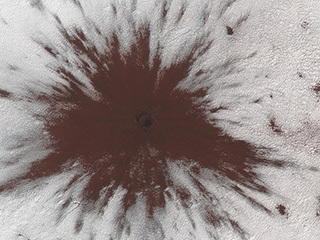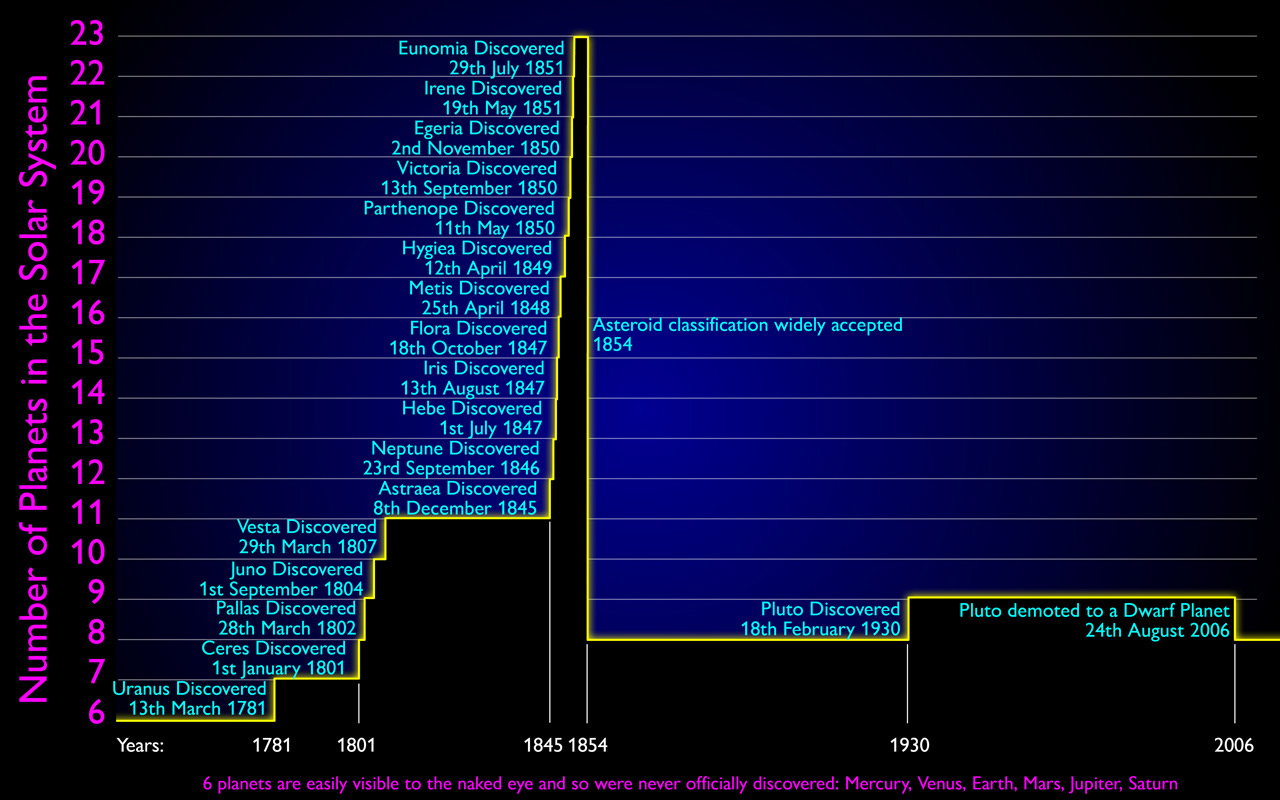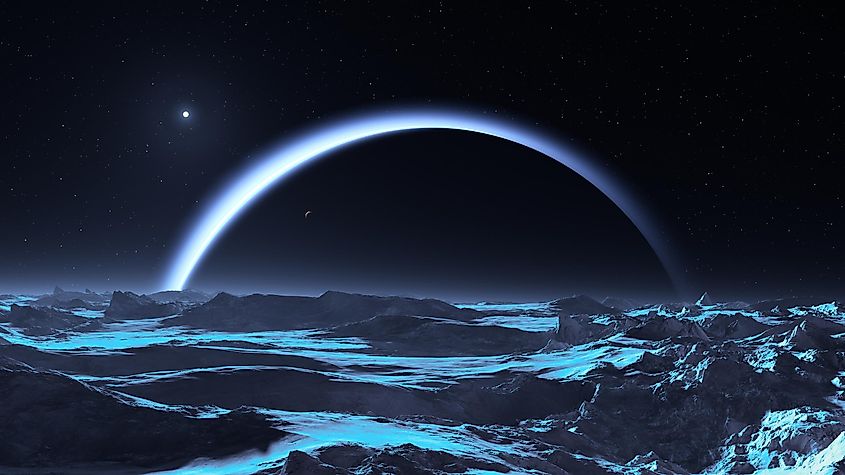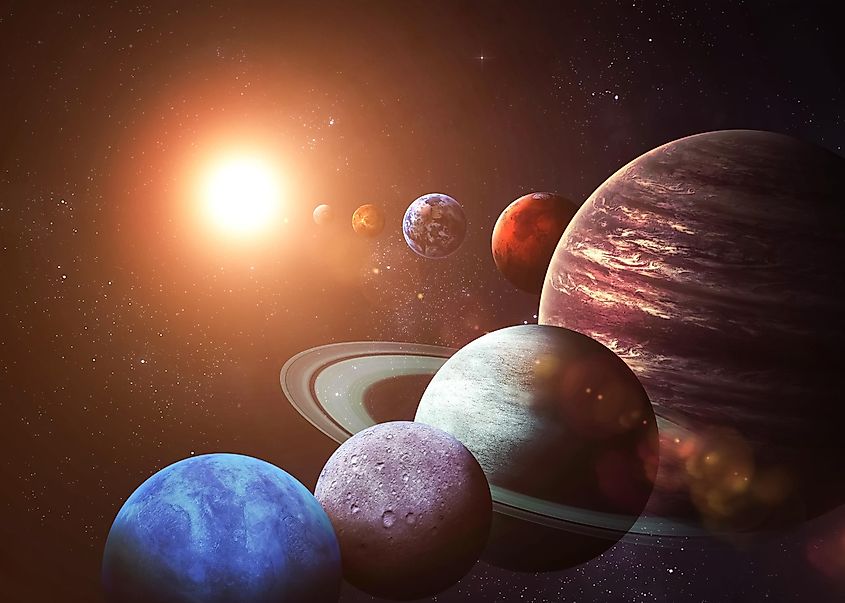How many planets are there in our solar system
How many planets are there in our solar system
How many planets are there in the solar system?
WHETHER or not you believe in life beyond Earth, there are actually a minimum of 100 billion planets in our universe, according to a Nasa study.
But how many planets make up our solar system?
How many planets are there in our solar system?
There are eight planets in our solar system, which is part of the Milky Way.
Pluto was once called the ninth planet in our solar system, but the International Astronomical Union made some category changes in 2006 and Pluto became a minor, or dwarf, planet.
The main reason for this decision is that Pluto’s wild-card orbit crosses the orbit of Neptune.
The idea of a ninth planet has persisted, and astronomers are now searching for Planet X, or Planet Nine, after mathematical evidence from 2016.
Planet Nine is thought to be five thousand times the mass of Pluto and 10 times the mass of Earth, and to orbit beyond Neptune.
What is the order of planets in our solar system?
The planets in our solar system are usually ordered by their distance from the Sun, with Mercury being the closest.
The other half are the Jovian, or Jupiter-like planets. In order of distance from the Sun, these are Jupiter, Saturn, Uranus and Neptune.
These last four are massive compared to the four inner planets, and are made of gasses like hydrogen, helium and nitrogen.
Jupiter and Saturn are often called the Gas Giants, while Uranus and Neptune are called the Ice Giants.
It is thought they probably all have solid cores.
There are many mnemonics for learning the order of the planets with one of the most popular being: My Very Educated Mother Just Served Us Noodles.
How many planets have been discovered?
There are thought to be 4,108 exoplanets identified in and beyond our solar system.
Nasa tweeted in January 2021: «We’ve discovered 4,108 exoplanets – planets beyond our solar system – so far.
«Most of these worlds orbit other stars, but not all. ‘Rogue planets’ are bound to no star as they move through space in darkness.»
Very few of these planets have been considered as potentials for supporting life forms.
For various reasons, astronomers work on the assumption that one planet exists for every star, though in reality some stars will have no orbiting planets and others many.
There are at least 400 billion stars in our own galaxy, so trillions in the entire universe.
Stars all differ from each other, as do galaxies, and indeed planets, so we can’t just multiply information about our own galaxy or solar system.
Planets may be gaseous or rocky, boiling or frozen, and may orbit close to their star or billions of miles out.
The Latest
Our solar system consists of our star, the Sun, and everything bound to it by gravity – the planets Mercury, Venus, Earth, Mars, Jupiter, Saturn, Uranus, and Neptune; dwarf planets such as Pluto; dozens of moons; and millions of asteroids, comets, and meteoroids. Beyond our own solar system, we have discovered thousands of planetary systems orbiting other stars in the Milky Way.
10 Things to Know About Our Solar System
10 Need-to-Know Things About the Solar System
One of Billions
Our solar system is made up of a star, eight planets, and countless smaller bodies such as dwarf planets, asteroids, and comets.
Meet Me in the Orion Arm
Our solar system orbits the center of the Milky Way galaxy at about 515,000 mph (828,000 kph). We’re in one of the galaxy’s four spiral arms.
A Long Way Round
It takes our solar system about 230 million years to complete one orbit around the galactic center.
Spiraling Through Space
There are three general kinds of galaxies: elliptical, spiral, and irregular. The Milky Way is a spiral galaxy.
Good Atmosphere(s)
Our solar system is a region of space. It has no atmosphere. But it contains many worlds – including Earth – with many kinds of atmospheres.
Many Moons
The planets of our solar system – and even some asteroids – hold more than 200 moons in their orbits.
Ring Worlds
The four giant planets – and at least one asteroid – have rings. None are as spectacular as Saturn’s gorgeous rings.
Leaving the Cradle
More than 300 robotic spacecraft have explored destinations beyond Earth’s orbit, including 24 American astronauts who made the trip from the Earth to the Moon.
Life as We Know It
Our solar system is the only one known to support life. So far, we only know of life on Earth, but we’re looking for more everywhere we can.
Far-Ranging Robots
NASA’s Voyager 1 and Voyager 2 are the only spacecraft to leave our solar system. Three other spacecraft – Pioneer 10, Pioneer 11, and New Horizons – will eventually hit interstellar space.
FAQ: Which Spacecraft are Headed to Interstellar Space?
Five spacecraft have achieved enough velocity to eventually travel beyond the boundaries of our solar system. Two of them reached the unexplored space between the stars after several decades in space.
How Many Planets Are There In The Solar System?
The number of solar system planets throughout recent history
The Current Official Answer : 8
The simple official answer to this question is 8. The solar system planets in order from the Sun are Mercury, Venus, Earth, Mars, Jupiter, Saturn, Uranus, Neptune. This has been correct since 2006 when the International Astronomy Union actually defined what a «Planet» is and also what a «Dwarf Planet» is.
There are now 5 official dwarf planets: Ceres, Pluto, Haumea, Makemake, Eris.
The number of planets pre 2006 : 9
Prior to 2006, the official count of planets was 9 because Pluto was reclassified in this year from being a planet to being a dwarf planet.
The number of planets pre 1930 : 8
The number of planets pre 1801 : 7
Of course before the discovery of Ceres (1801), the number of planets was 7: Mercury, Venus, Earth, Mars, Jupiter, Saturn, Uranus.
The number of planets pre 1781 : 6 or 8?
Of course before people actually thought of the Earth as a planet, the «Classical Planets» used for astrology included the Sun and the Moon. so you might say that we had 7 planets (i.e. The Sun, Moon, Mercury, Venus, Mars, Jupiter and Saturn).
The official planets and dwarf planets in order
Visit The Planets Today Store for Posters and Gift Ideas
What Makes a Planet and How Many Are There in Our Solar System?
How many planets are there in our solar system? 9? 8? 12? More? The answer might actually surprise you.
Here we explore the answer to this apparently simple question and take a quick tour of the main primary planets of our home solar system.
What are the 3 criteria for a planet?
What is a planet? An enormous chunk of stuff (rock or gas), roughly spheroidal in shape that orbits a star and may or may not have a moon, right?
While this is in part true, there are some issues with such a simple definition. What about asteroids? When does an object become large enough to be considered a planet?
Why are Venus and Mercury planets (according to current classifications) but not Pluto? As it turns out, the reasons are pretty straight forward.
Back in 2006, The International Astronomical Union (IAU) decided to define what makes a planet. The IAU is a worldwide organization of astronomers.
Because Pluto is not actually large enough to «dominate» its orbit, it can not be called a planet according to the IAU. Other, smaller planets like Neptune are actually somewhere in the order of 8000 times more massive than Pluto and do indeed «dominate» their own orbits.
For this reason, Neptune comfortably fits the above criteria and can be called a planet. Pluto, on the other hand, is now commonly referred to as a dwarf planet.
Are there actually 12 planets in our solar system?
The very same organization IAU, mentioned above, have proposed that there might be more than the commonly recognized 8 planets in our solar system. In the IAU meeting in Prague in 2006, resolutions were also passed for a new planet classification system which might actually boost our current yield of planets to 12.
Under this new classification system, some objects in our solar system could technically be considered to be planets. For example, the asteroid Ceres, Pluto’s moon Charon, and a newly discovered object UB313 (Xena) could be considered candidates for planet status.
How Many Planets Are There In The Solar System?
For most of human history, we could only see six planets: Mercury, Venus, Earth, Mars, Jupiter, and Saturn. The two outermost planets, Uranus and Neptune, were too far for early civilizations to see without a telescope. Uranus was the first planet to be discovered using a telescope. In 1781, the astronomer William Herschel discovered Uranus using a telescope. The discovery of Uranus inevitably led to the discovery of Neptune. The orbit of Uranus was complicated for astronomers to explain, and there were slight changes in it that could not be explained given the mass of Uranus and the other gas giants. To explain Uranus’s orbit, astronomers predicted the existence of another planet that orbited the Sun beyond Uranus. Neptune was first observed in 1846, confirming earlier predictions of its existence. This makes Neptune the only planet to be discovered using mathematics. With Uranus and Neptune, the solar system grew to include eight planets. However, the story wasn’t over.
The Ninth Planet
Neptune as Seen from the Surface of its Moon Triton
Like Uranus, the orbit of Neptune was slightly irregular. Given the calculated masses of Neptune and the other gas giants, the rotation of Neptune made little sense. Astronomers predicted that another planet must exist beyond the orbit of Neptune. For decades, astronomers surveyed the night sky searching for the ninth planet. Then, in 1930, astronomer Clyde Tombaugh discovered what was believed to be the ninth planet. Not only was it far beyond Neptune, but it was also very close to the predicted position of the ninth planet. It was called Pluto, and once again, the solar system’s family of planets grew. However, Pluto’s story was far from over. As it would later turn out, Pluto was far too small to explain the irregularities in Neptune’s orbit. Instead, Pluto may have been considered a planet, but its discovery was complete luck. When the Voyager 2 spacecraft completed its flyby of Neptune in 1989, it was revealed that the mass of Neptune was different from what astronomers had calculated. Once the correct mass of Neptune was accounted for, its orbit no longer contained irregularities. Despite this, Pluto would still be considered a planet until it was redefined as a dwarf planet in 2006. For the first time, the number of planets in the solar system shrunk.
Has The Solar System Always Had Eight Planets?
The Eight Planets in our Solar System Aligned Around the Sun
Today, the solar system contains eight planets. However, this has not always been the case. Shortly after the Sun formed and the planets began forming, a hundred or more planets were likely forming around the Sun. The early solar system existed in a state of utter chaos. The gravitational pull of so many planets made it difficult for them to find stable orbits. Instead, planets tugged on one another and would sometimes cross orbits. Occasionally, entire planets would collide. Depending on the mass of the planets and the angle at which the collision occurred, the larger planet would either absorb the smaller planet, or they would both break apart. It is generally believed that every planet in the solar system underwent one or more collisions with other planets. Even the Earth experienced a planetary collision around 4.5-billion years ago. A Mars-sized planet called Theia collided with the Earth at just the right angle that, rather than the two planets breaking apart, the young Earth absorbed Theia, and the debris from the collision went on to form the Earth’s moon.
The Return Of Planet Nine
The Most Color-Accurate Photo of Pluto Taken by NASA’s New Horizon’s Spacecraft in 2015
With Pluto’s demotion, many thought that the idea of a ninth planet in the solar system was dead. However, in the last decade, observational evidence has hinted at the existence of another planet far beyond the orbit of Neptune. In the far outer regions of the solar system, there exist countless comets, miklky w, and other forms of planetary debris in an area called the Kuiper Belt. While tracking the orbital path of some Kuiper Belt Objects (KBO), astronomers found some irregularities in their orbits. If a planet roughly 10-times the size of the Earth existed in the Kuiper Belt, it would explain the abnormalities observed in these orbits. If this hypothetical Planet Nine does exist, it will orbit the Sun roughly 400 times further than the Earth orbits the Sun. It would take Planet Nine thousands of years to complete one orbit around the Sun. As of yet, astronomers have found no definitive proof that Planet Nine exists.
It may seem strange that a planet within our solar system is hard to find. After all, scientists have uncovered thousands of planets outside the solar system, so why is it so difficult to find one within the solar system? Unfortunately for scientists, finding Planet Nine is no easy task if it even exists. Rather than being able to look inwards and use things like a star’s gravity or light to uncover a planet, scientists are looking outwards, trying to observe a planet that would receive virtually no sunlight. Planet Nine would also give off little to no heat, making it tremendously difficult to observe it in other wavelengths of light.
If there is a ninth planet in the solar system in the Kuiper Belt, it is unlikely it formed that far away from the Sun. Instead, it would have formed much closer and been pushed away by the other gas giants and planetary collisions. Perhaps a more intriguing hypothesis is that Planet Nine never actually formed in our solar system. It may have formed in a different solar system in the Milky Way, eventually being caught by the Sun’s gravity. This may seem strange, but a star can capture other planets. During the formation of a solar system, several planets may be flung outside their star’s gravity, becoming what are known as rogue planets. Some rogue planets may eventually find themselves close enough to another star to be captured by its gravity. The search for Planet Nine is ongoing, and if it does exist, its discovery will represent one of the most significant discoveries in the history of our solar system. As of yet, the solar system still contains eight planets.
Источники информации:
- http://solarsystem.nasa.gov/solar-system/our-solar-system/overview/
- http://www.theplanetstoday.com/how_many_planets_are_in_the_solar_system.html
- http://interestingengineering.com/what-makes-a-planet-and-how-many-are-there-in-our-solar-system
- http://www.worldatlas.com/space/how-many-planets-are-there-in-the-solar-system.html







/img/iea/4N618rR4GJ/facst-about-planets.jpg)


